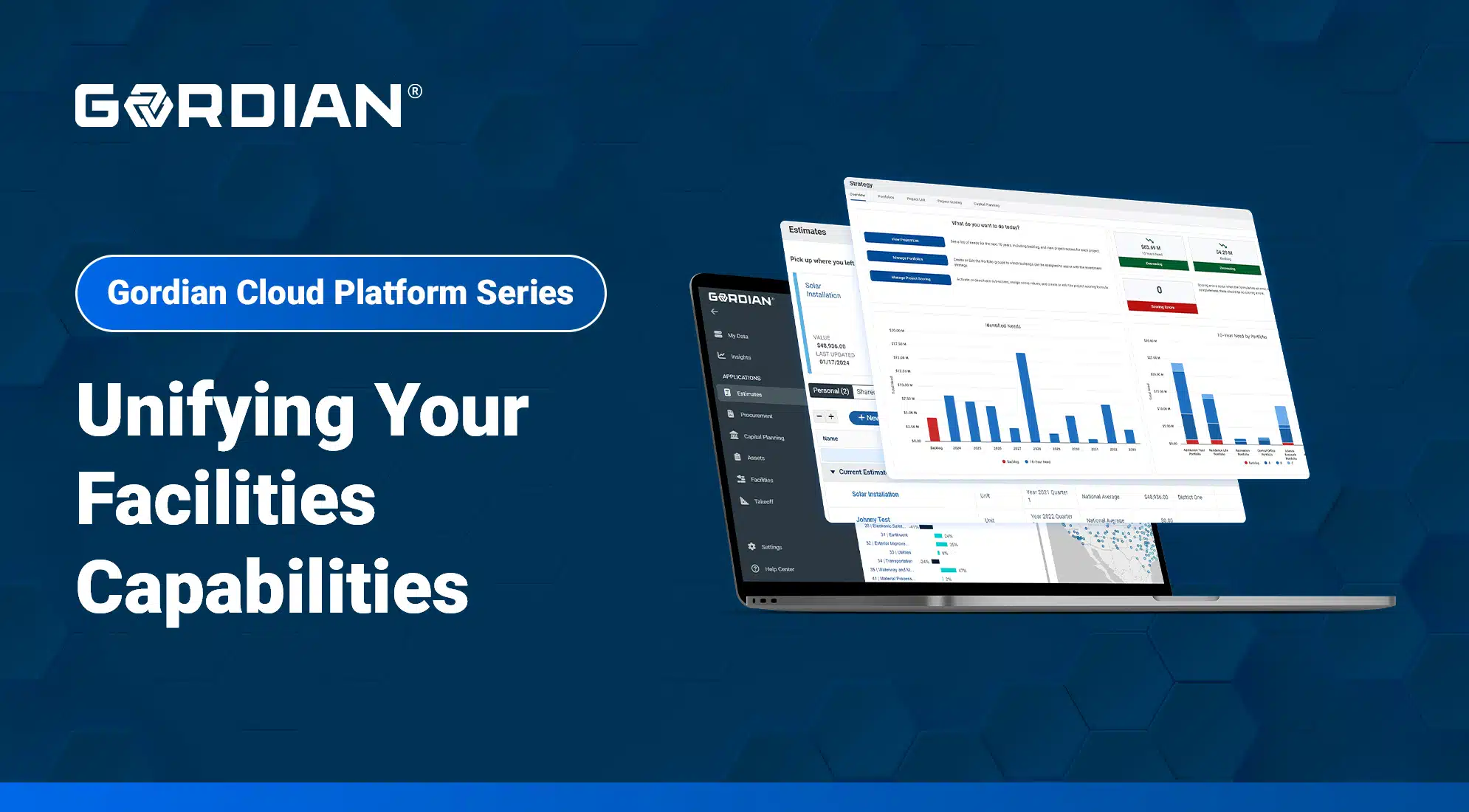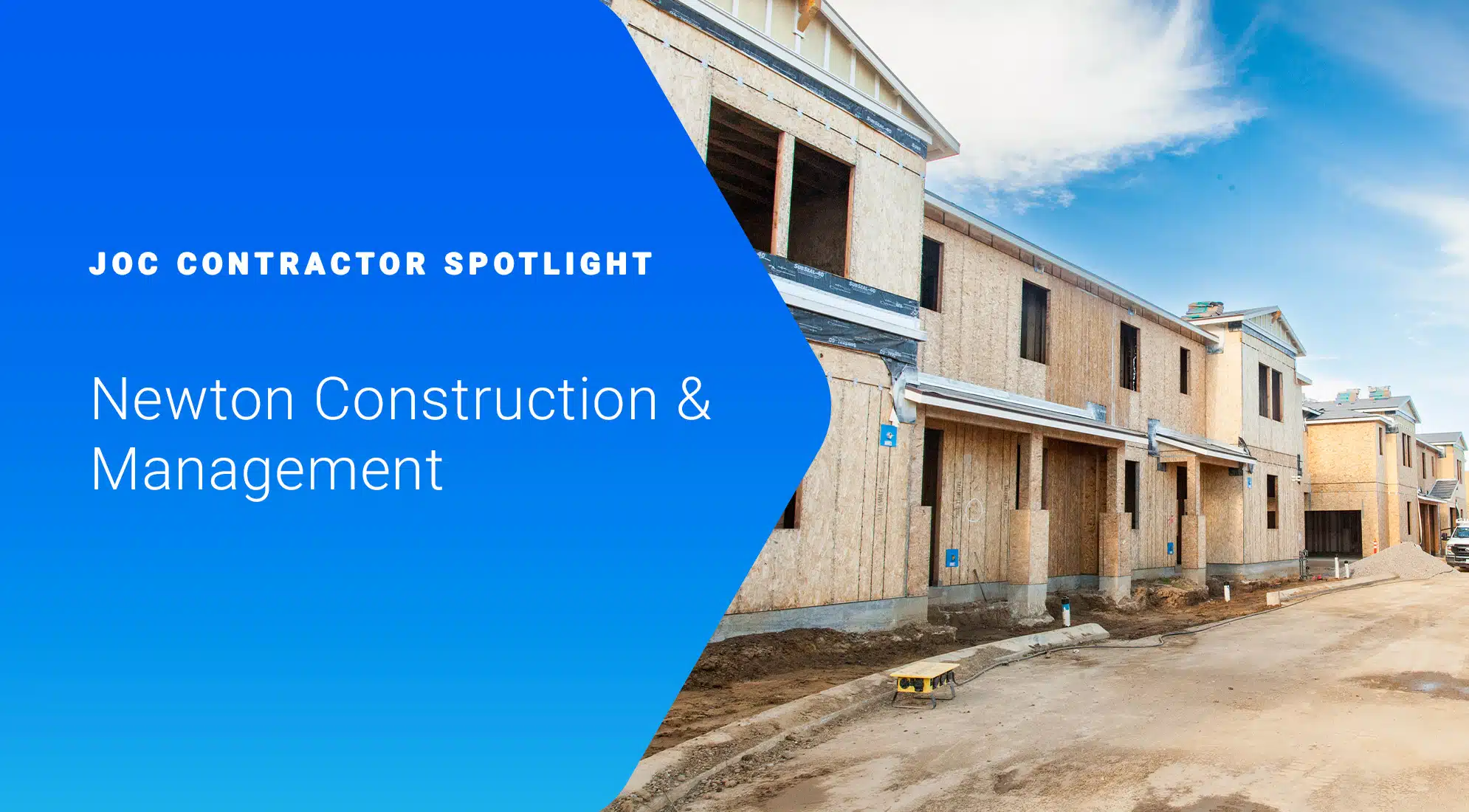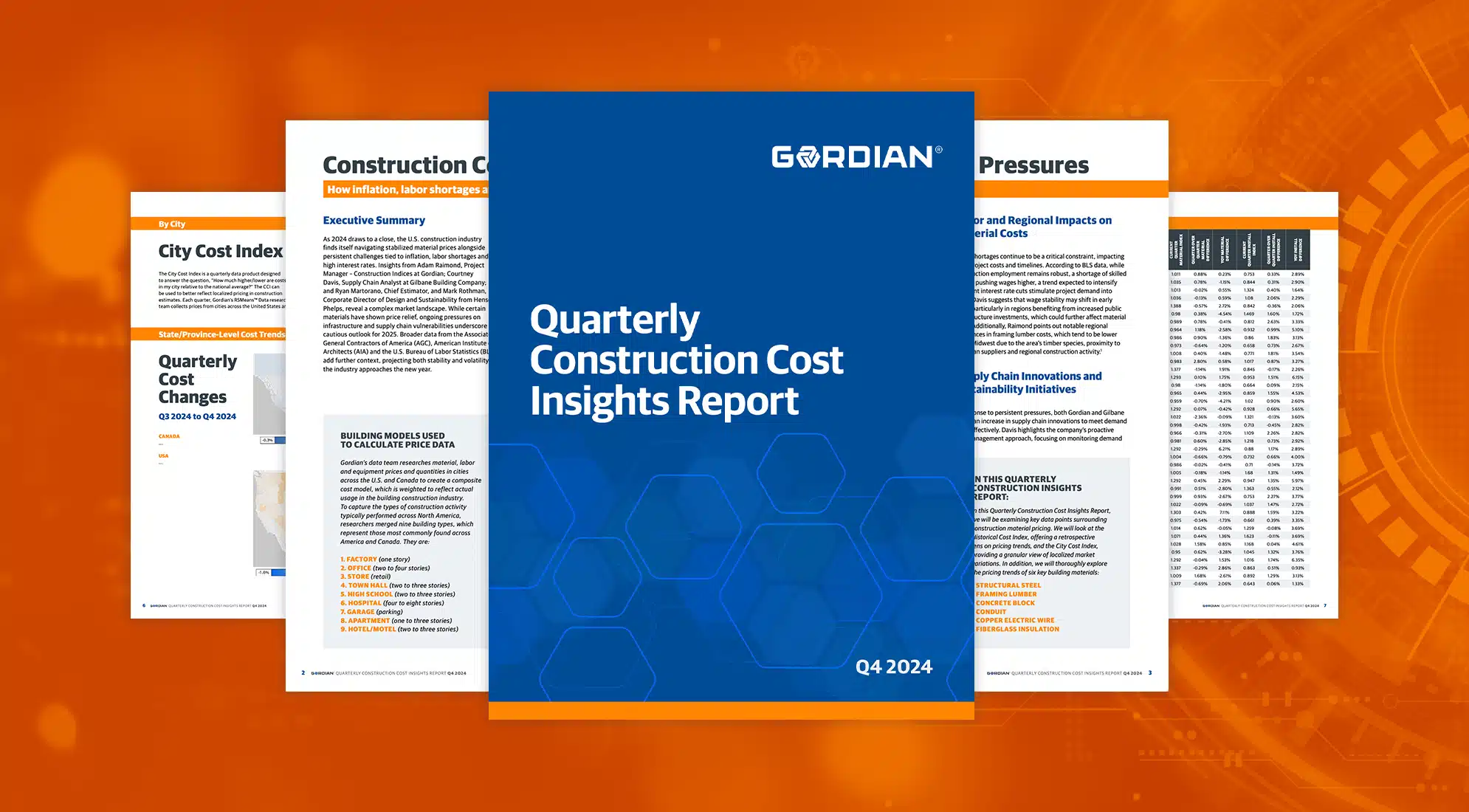Construction procurement is a multi-step process for delivering construction projects, whether they be new builds, gut renovations, simple rehabs, cosmetic upgrades or repairs. People often use the words “procurement” and “purchasing” interchangeably, but they are not the same. Purchasing refers only to paying for goods and services and it is just one step in the construction procurement process.
The construction procurement process is complex and important. There are many moving parts and factors influencing project success. This post takes a step-by-step look at construction procurement.
The Importance of Construction Procurement
In the private sector, responsible and effective construction procurement is a matter of economics. When done well, the process can maximize a project’s budget, preserve the project timeline and ensure a quality product by getting the best possible materials at the best possible time and for the best possible price.
Smart construction procurement can have a cascading effect. The more time and money saved, theoretically, the more an organization can profit. This profit could lead to better pay, more projects and company expansion. Those benefits can ripple throughout a community.
Public construction procurement differs from its private sector counterpart in that public procurement is subject to laws and oversight designed to ensure the proper use of taxpayer funds. This extra layer of regulation and insistence on transparency hinders project speed, but it is necessary to limit corruption.
Further, building and maintaining facilities and infrastructure is one of the most important jobs of any public sector organization. Roads and bridges. Fire stations. Police departments. Post Offices. Public schools. County parks. Communities rely on these assets every single day and it is therefore vital that they are reliable, functional and safe. Ensuring that public assets meet the needs of the community begins with successful construction procurement.
Who is Responsible for Construction Procurement?
In the majority of cases, the general contractor (GC) bears the ultimate responsibility for the timely purchase and delivery of construction materials and equipment. However, they often outsource the legwork to subcontractors and tradespeople because they have relationships with suppliers. The GC oversees this activity and holds subs to the project owner’s standards and expectations.
On larger projects, particularly those in the public sector, there is often an entire procurement office dedicated to acquiring all material goods and services. For smaller projects, there is typically one person responsible for construction procurement. This person is likely to wear several hats throughout the project, including project management.
The Construction Procurement Process
Construction procurement is akin to buying a house in that there are many phases in the process. The phases may vary depending on the type of project (new builds versus renovations versus routine maintenance, for example) and the project delivery method, among other factors, but by and large the phases remain the same.
1. Design
Success in the design phase makes the entire construction procurement process run more smoothly and efficiently. In this phase, project owners collaborate with architects and other design professionals to develop drawings and specifications that define project requirements, including those for materials. Contractors use these requirements in a later phase.
Public-sector construction work often includes an extra layer of procurement requirements. They may require a certain percentage of work be done by minority- and/or women-owned construction companies, veteran-owned businesses and small businesses. There also may be additional requirements and regulations to comply with, depending on project location and the level of government owning the project.
2. Bid Solicitation
Owners solicit bids via a request for proposal (RFP) or an invitation to bid (ITB). The solicitation is a comprehensive collection of documents containing all the details contractors need to submit a bid, including project design and specifications, preferred delivery method, insurance requirements and contractor qualifications. The solicitation represents the full scope of the project and relevant compliance needs so contractors can estimate and bid accurately.
The bid solicitation period for public-sector projects is transparent and open to all qualified contractors to ensure the project is awarded fairly. Private sector projects do not require this level of transparency. Owners, if they choose, may invite an exclusive group of contractors to bid.
3. Bid Submission
Using the solicitation materials, contractors estimate the costs of the project. To do so accurately, they often use a construction estimating software like Gordian’s RSMeans Data Online. North America’s premier construction estimating software, RSMeans Data Online combines the most trusted cost data in the industry with powerful and intuitive workflow tools that enable contractors to create accurate estimates and competitive bids.
General contractors also rely on their subcontractors to confirm costs with their suppliers. Once they are confident in the accuracy of their estimates, they will submit them along with all other applicable bid materials.
4. Bid Selection
At this phase of the construction procurement process, project owners compare bids and select a winner. Price is often a determining factor in this selection, however project owners may consider a variety of factors including their experience with the contractor, the contractor’s experience on similar projects and the contractor’s safety and compliance record to name a few.
This stage may also include a negotiation period, depending on the discrepancy between the bid and the expected budget, and the project delivery method. Once both sides come to terms, the owner awards the contract.
5. Supplier Bidding and Pricing
The project owner may purchase larger materials or specialty equipment even before a contractor is awarded the project. Those items are the exception. The majority of construction materials and equipment are up to the awarded contractor to procure.
Standard-issue items like lumber or plumbing components can be ordered directly from the general contractor’s preferred suppliers. However, the GC may have to solicit quotes from multiple suppliers for specially fabricated or engineered components. The GC evaluates these quotes, keeping an eye on total costs and product quality, and makes selections, like how owners compared and selected bids in the previous phase of the construction procurement cycle.
Once the general contractor selects materials and equipment and confirms lead time with suppliers, they can create a submittal schedule. Essentially a procurement sequence, the submittal schedule prioritizes those items with the longest lead times to ensure materials and equipment are delivered on time.
6. Submittable Review
The GC submits their submittal schedule and selected materials to make sure they satisfy project requirements and specifications. This includes reviewing everything from major structural and mechanical components to nitty-gritty details like paint color and flooring. Every single component must be approved and the approval must be documented.
This phase demonstrates the importance of timeliness in the construction procurement process. A delay in requesting or receiving quotes from suppliers can have detrimental downstream consequences. If progress stalls for too long, materials and equipment might not reach the job site on time. These snags not only throw off the timing of a project, but they could ruin the relationship between the GC and the project owner.
7. Purchase and Delivery
With the design team’s approval, the GC can issue purchase orders for supplies. Materials are often purchased on credit or with outside financing to allow contractors to purchase the items they need without their cash flow taking a hit.
Contractors and procurement managers then track the shipping progress of their materials to ensure their timely delivery. This is often done with the aid of construction management software that can track shipping in real time, allowing the project team to adjust to unexpected delays.
The team must also be ready to receive materials. That requires coordinating contractor schedules so the right teams are on the job site and have a safe and efficient way to unload the delivered items. Receiving materials may require arranging for a forklift, crane or other specialty equipment and ensuring they come with proper rigging or other attachments for lifting and installing the material. These delivery logistics must be carefully thought through and planned to maintain safe working conditions and prevent project delays.
8. Construction and Final Inspection
Contractors complete the project according to the approved design and specs. The last step in the construction procurement process is a final walk-through where the owner, designers and regulators inspect whether all components were installed according to project specifications and requirements, and applicable building codes.
Popular Construction Project Delivery Methods
One thing project owners must decide during the construction procurement process is how the work will be delivered. It’s helpful to think of construction project delivery methods like tools. Each has its strengths and use cases and should be deployed accordingly.
1. Design-Bid-Build — Also known as “traditional bidding,” Design-Bid-Build is the most popular construction project delivery method. As its name suggests, this delivery method consists of three distinct phases: the design phase, the bid phase and the build phase.
The design phase begins with an owner hiring a designer, either an architect or an engineer, to design a new facility. While designing the new building, the architect or engineer will prepare any necessary drawings and specifications that the contractor’s team will need to complete the construction work. Once the design work is finished, the project is opened for bids. Once the winning bid has been selected, the build phase begins.
Although this process is lengthy, it allows owners to work with architects and engineers to get the best price for a project. A unique feature of the Design-Bid-Build method is that the designer oversees the work of the general contractor and subcontractors, ensuring the owner receives a high-quality end product.
2. Design-Build — The Design-Build method reduces the Design-Bid-Build timeline by replacing the designer and the contractor with a single party who fills both roles and serves as the owner’s point of contact for the entirety of the project.
The process begins with the project owner drafting an initial project design and asking for proposals. The key difference between a bid and a proposal is that proposals include notes on the project design, whereas bids don’t alter the project design. Owners typically select the proposal that provides the best value for the project without sacrificing design elements.
After the owner selects a proposal, the builder can secure permits and begin construction immediately. A Design-Build project may be completed in phases, where the first phase is designed and construction begins while the team designs the second phase. This makes Design-Build ideal for large projects that require an accelerated timeline.
3. Construction Manager at Risk (CMAR) — Another derivative of Design-Bid-Build, Construction Manager at Risk is a unique delivery method where a construction manager oversees the entire project. The construction manager acts as the owner’s representative and has a profound motivation for being a faithful advocate.
Approximately halfway through the design process, the construction manager will present the owner with a Guaranteed Maximum Price (GMP), a price threshold. If the project comes in under this threshold, the manager is often rewarded by a cost-sharing agreement. But if the project exceeds the GMP, the construction manager is responsible for making up the difference.
Once the design is finalized, the construction manager solicits bids from contractors and selects the one they believe will meet the owner’s needs without exceeding the GMP. Once work begins, the manager supervises the contractors and ensures the project stays on schedule and within the GMP. CMAR is an ideal project delivery method for owners who want to outsource project management responsibilities.
4. Job Order Contracting (JOC) — Job Order Contracting is an indefinite-delivery, indefinite-quantity (IDIQ) project delivery method, meaning many projects can be completed with one competitively awarded contract. Rather sending each project to bid, owners take bids from contractors at the beginning of the JOC contract and then access their services as they need without having to re-bid throughout the life of the contract. This unique, single-solicitation process makes JOC an ideal choice for owners who complete a high volume of projects.
Gordian’s Job Order Contracting solutions are built on verified, local construction costs published in a Unit Price Book called the Construction Task Catalog® (CTC) that lives for the entirety of the contract. The CTC allows owners to access contractor services without having to renegotiate prices. Instead of bidding on individual projects, contractors bid by adding an Adjustment Factor to the CTC to account for their overhead, profit and other operating costs.
JOC reduces project delivery to a matter of weeks, shrinking time to construction by as much as 25%, according to a report by NIGP and Gordian. That time savings results in significant cost savings by reducing administrative work.
Each JOC project is preceded by a Joint Scope Meeting to make sure all parties agree on what work needs to be completed and to develop a Detailed Scope of Work. Once the scope is set, the contractor submits a Price Proposal for the total project cost and Gordian reviews it to ensure it reflects the scope. Work may begin once the owner approves the Price Proposal and issues a Purchase Order.
Gordian’s expert Price Proposal review saves an average of 6% in construction costs.
Because JOC is designed to complete a succession of pre-defined construction tasks, it’s perfect for routine, operational work including repairs, renovations, maintenance and punch list work, especially when short timelines and/or fixed budgets are involved.
5. Time and Materials — This project delivery method is unique because it allows construction to begin without a set timeframe or final budget. With a Time and Materials contract, owners determine the approximate scope of the project and then agree with the contractor on a fixed hourly wage plus the total cost of materials. Additionally, owners and contractors will agree on maximum labor hours and a maximum total project cost to avoid egregious cost overruns. Everything else is negotiated during construction, allowing for flexibility when dealing with unforeseen circumstances.
Time and Materials is a good option for project owners who are comfortable sacrificing time reviewing billable hours and materials used throughout construction in exchange for starting work quickly.
Construction Procurement Challenges
Anyone who has worked in construction will tell you that every project has its hiccups. Construction procurement also poses its fair share of challenges. Next, we examine some of the most common hurdles.
Cash Flow Management
Payment for construction materials often comes before subcontractors are paid by GCs. A protracted delay between when the bill is due and when their check comes in could make it challenging to cover payroll, utilities and other expenses.
Schedule Changes
Like budgets, schedules are hard to control once construction begins. This is where detailed solicitation materials and strong contractor relationships come into play. The more information contractors have and the better their track record of finishing on time, the more likely it is that the schedule will not be a problem. Further, if contractors procure materials and designers approve plans in a timely manner, delays are more likely to be avoided.
Design Changes
Nothing puts a hitch in the construction procurement process like a change order. Given the intricacies and dependencies inherent in construction procurement, the fewer design changes, the smoother the project will proceed.
Supply Chain Disruptions
Market forces tend to stall the construction procurement process. Skilled labor and material shortages can postpone a project for a long time, much to the frustration of procurement teams. Having a wide array of suppliers and being open to suggestions for completing work can ease and eliminate supply chain delays.
Successful construction procurement requires attention to detail, efficient workflows and effective communication between all parties. A lot of work is done between the drafting of the initial designs and the final inspection. Properly managing every phase of the construction procurement process goes a long way to making the project is delivered on-schedule, within the budget and up to the owner’s quality standards.





